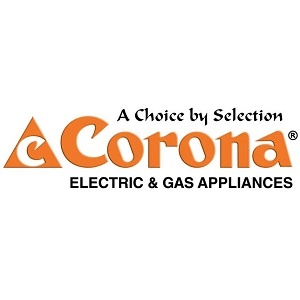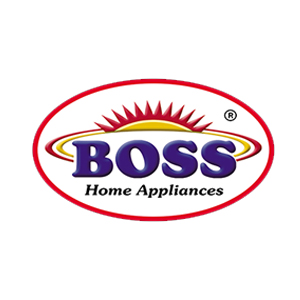F1 Error in AC – Causes, Troubleshooting, and Fixes

Air conditioners (ACs) are essential in Pakistan’s hot climate, providing relief from the scorching summer heat. However, like all appliances, ACs can sometimes encounter issues, and one common problem that many users face is the F1 error. This error code typically indicates a malfunction in the system, leaving users frustrated. In this guide, we will explore the causes of the F1 error, troubleshooting steps, and possible fixes to restore your AC to proper working condition.
What Does the F1 Error Code Mean?
The F1 error code on an air conditioner generally points to a sensor issue, often related to the indoor temperature sensor. It’s a warning sign that something might be wrong with the internal components that regulate temperature. However, the exact cause of this error may vary depending on the brand and model of your AC.
Common Causes of the F1 Error
There are several potential reasons why your air conditioner may display the F1 error code. Understanding these causes can help in troubleshooting the problem efficiently.
1. Faulty Temperature Sensor
One of the primary reasons for the F1 error is a malfunctioning temperature sensor. This sensor monitors the room temperature and communicates with the AC to adjust the cooling accordingly. If the sensor is damaged, the AC may fail to get accurate readings, triggering the F1 error.
2. Wiring or Connection Issues
Loose or damaged wiring that connects the temperature sensor to the main unit can cause the F1 error. Poor connections can interrupt the sensor’s function, causing the AC to display this error code.
3. Clogged or Dirty Filters
Over time, dust and debris can accumulate on the AC’s filters. If not cleaned regularly, this buildup can obstruct airflow, causing the internal temperature sensors to malfunction and trigger the F1 error.
4. Faulty Circuit Board
The circuit board controls the AC’s functions, including the temperature settings. If the circuit board is damaged or experiences electrical issues, it may fail to interpret signals from the temperature sensor correctly, leading to the F1 error code.
5. Internal System Malfunctions
In some cases, an internal issue such as a refrigerant leak or malfunctioning compressor can trigger the F1 error. While less common, these problems can disrupt the cooling process and affect sensor performance.
Troubleshooting the F1 Error Code
Before calling a professional technician, you can try the following troubleshooting steps to resolve the F1 error and get your AC back to normal operation.
1. Turn Off the AC and Reset
The first step is to turn off the air conditioner completely, either through the remote control or the main power switch. After waiting for a few minutes, restart the AC to see if the error code disappears. Sometimes, a simple reset can clear temporary issues.
2. Check the Temperature Sensor
If you’re comfortable with basic maintenance, inspect the temperature sensor for any visible signs of damage. Clean the sensor gently with a soft cloth to remove dust and dirt. Ensure that the sensor is properly connected to the circuit board. If damaged, you may need to replace it.
3. Clean the Air Filters
Clogged filters can impede airflow, causing the system to overheat and display an error. Remove the AC’s filters and clean them thoroughly. You can wash them under running water (if washable) or vacuum them gently to remove dust. Reattach the filters and check if the F1 error persists.
4. Inspect Wiring Connections
Check the wiring connections between the temperature sensor and the AC’s main unit. Loose or frayed wires can cause the F1 error. If you find any damaged wires, they may need to be repaired or replaced by a professional.
5. Check the Circuit Board
If the problem lies with the AC’s circuit board, it may require a professional to inspect and repair it. Look for visible signs of damage, such as burned-out components, which could indicate a serious issue with the board.
Fixing the F1 Error
If the above troubleshooting steps don’t resolve the issue, you may need to consider professional repair. Here are some potential fixes:
1. Sensor Replacement
If the temperature sensor is faulty, it will need to be replaced. This is a relatively simple fix for an experienced technician.
2. Wiring Repair or Replacement
Loose or damaged wiring may require repair or replacement. A technician can rewire the connections or replace damaged parts.
3. Circuit Board Replacement
If the circuit board is damaged beyond repair, it may need to be replaced. This is typically a more expensive fix but necessary for the AC to function properly.
4. Compressor or Refrigerant Issues
In some cases, the F1 error may indicate issues with the compressor or refrigerant. These problems require professional intervention to diagnose and fix.
Preventing the F1 Error
To prevent the F1 error from occurring in the future, follow these maintenance tips:
- Regular Cleaning: Clean the AC filters at least once a month to prevent dust buildup.
- Check for Blockages: Ensure that the vents and air ducts are clear of obstructions.
- Professional Servicing: Have your AC professionally serviced annually to check for internal issues.
Conclusion – Keep Your AC Running Smoothly
The F1 error code is a common issue that can arise in ACs, typically related to sensor problems or wiring issues. By following the troubleshooting steps outlined above, you may be able to resolve the problem on your own. However, if the issue persists, don’t hesitate to consult a professional technician. Regular maintenance, such as cleaning filters and inspecting connections, can help prevent future errors and ensure that your AC continues to function smoothly.
Check out our latest collection of energy-efficient ACs here to ensure your cooling system works efficiently and lasts longer, minimizing the chances of encountering such issues!




















































